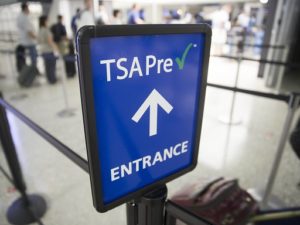 How Airports Are Using Biometrics So You Can Spend Less Time Waiting in Lines
How Airports Are Using Biometrics So You Can Spend Less Time Waiting in Lines
That all-too-common scenario is one of the issues that airports, airlines, and government agencies are hoping to solve with a burgeoning amount of biometrics, the category of technology that includes fingerprint, retinal, and facial recognition scans and helps travelers skip over lines.
“Each of us is different physically in many different ways, from the spacing between our eyes, the sound of our voice to the patterns of our fingerprints,” explains Rob Mungovan, COO at Aware, a biometrics software company. “Biometrics measures these differences and records them. This comparison of physical characteristics can be a much more secure authentication method than those used in most contemporary solutions, such as passwords.”
Since the onset of the pandemic, biometrics have proliferated in hubs across the country as a faster—and touchless—option at each stage of the air travel journey. One particularly notable new initiative is a pilot program between Delta and TSA, with a new biometric-enabled bag-drop designed to provide a seamless, low-touch experience that should take less than 30 seconds.
Posted from Conde Nast Traveler



